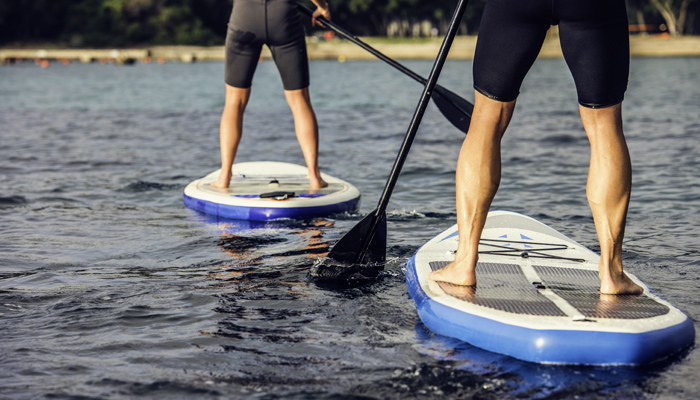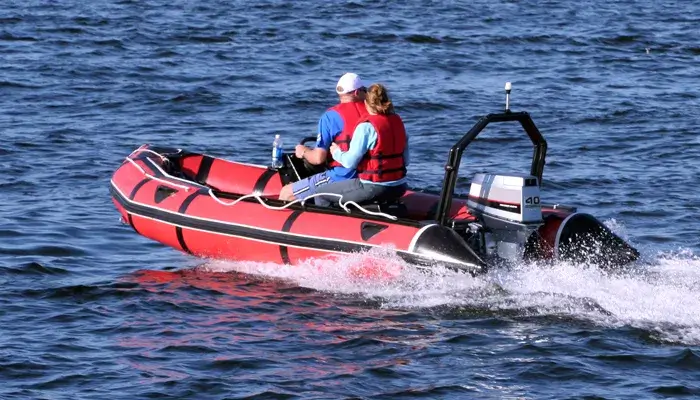How to Winterise a Sailing Boat
Prepping your boat before removing it from the water
Bringing a sailing boat ashore for the winter is the perfect time to carry out some general maintenance and winterise your boat in preparation for the cold and stormy days ahead. We've put together some tips on winter boat maintenance.
Prior to lifting the boat out of the water, run the engine to warm it up, then switch off and drain the engine oil. This is because warm oil is easier to pump out of an engine than cold oil so you'll be making your life easier.
Once you’ve drained the engine of the old oil you can refill the engine with new oil and replace the oil filter. This prevents engine corrosion over the winter.
Winter maintenance for your boat
Once your sailing boat is ashore, follow these simple boat maintenance tips to help preserve its components during the winter months:
1. Drain the water cooling system and replace with marine grade antifreeze, which is non-toxic.
2. Top up the fuel tank(s) with fuel. This not only prevents corrosion of the tank but also prevents condensation build up in the fuel system which can cause major problems with diesel engines.
3. Spray engine electrics with WD40 to prevent corrosion of the wiring and electrical components.
4. Disconnect the boat batteries and take them home to store over winter in dry warm, conditions. This helps preserve the life of the batteries.
How to store your sails over winter
Salt attracts and prolongs the presence of moisture on your sails. Couple with this a lack of airflow and your sails are likely to experience mildew growth while the boat is in storage.
On that basis, remove all sails from the boat, wash the fabric with fresh water and leave to dry thoroughly before storage.
Treating your sails well will undoubtedly increase their lifespan so if you want to be extra cautious it is advisable to have the sails laundered which will help your chances of preventing mildew. And, if you go to a sail-maker, they will be able check the sail for any damage too.
Storing your boat equipment
Remove deck gear from the sailing boat and store ashore in dry conditions. This includes cockpit, canopy, safety gear, ropes and control lines. Rinse ropes and canvas in fresh water before storage in dry conditions.
The cabin also needs to be protected from condensation and moisture build up. Remove all cushions, blankets, towels etc. to encourage air flow.
Remember to store the items somewhere secure so they remain covered by your boat insurance. If stored at home however, you may find your home insurance covers them instead so be sure to only factor their value on either your home or your boat policy.
Winterising tips for your boat
Finally, there are just a few more tips on our winter check list before your sailing boat is prepped for hibernation:
- In the cabin, open all cupboard doors to encourage airflow through the cabin.
- Below decks check the bilges are empty and dry and remember to drain the fresh water tank.
- If shore power is available, install a de-humidifier and also consider a low wattage bar heater to help keep the interior dry.
- It is a good idea to check the boat every couple of weeks or so, to ensure rainwater isn't getting in.
- You can also put a tarpaulin over the cockpit and protect the instruments, winches and seating. It's not vital, but we'd recommend it as an extra precaution.
Sailing boat insurance
Having insurance for your boat is still important during the winter. It’s understandable that after following the steps above you’ll be confident that your boat and sails are safely tucked away for the winter. However, in reality there are many risks which could still cause damage to your sailing boat. On that basis, make sure your insurance is up to date with the most recent details for your boat and if it’s not, give your boat insurance provider a call for more information.
If you already have insurance for your sailing boat, when you set it up did you let you insurer know where you were going to store the boat? If not, it's worth informing them: most policies will cover your boat in transit and in storage, but always check before you travel or a claim may not be covered.
This should cover most things you'll need to do to protect your sailing boat during the winter. If you have any other tips please share them with us on our Facebook page.
About the author
Adam Summersby is a respected leader with 11 years’ varied experience in niche personal and commercial lines insurance, including caravan, site operators and excess reimbursement, with proficiency in leadership, sales and account management.
Date: November 14, 2016
Category: Boat










